This is not an easy time to be in the sports broadcasting or production business.
Not only have multiple iconic tournaments and competitions been cancelled during the last few months, often at short notice, due to the ongoing coronavirus pandemic, but networks and broadcasters are now having to grapple with the issue of sports content production in a socially-distanced world.
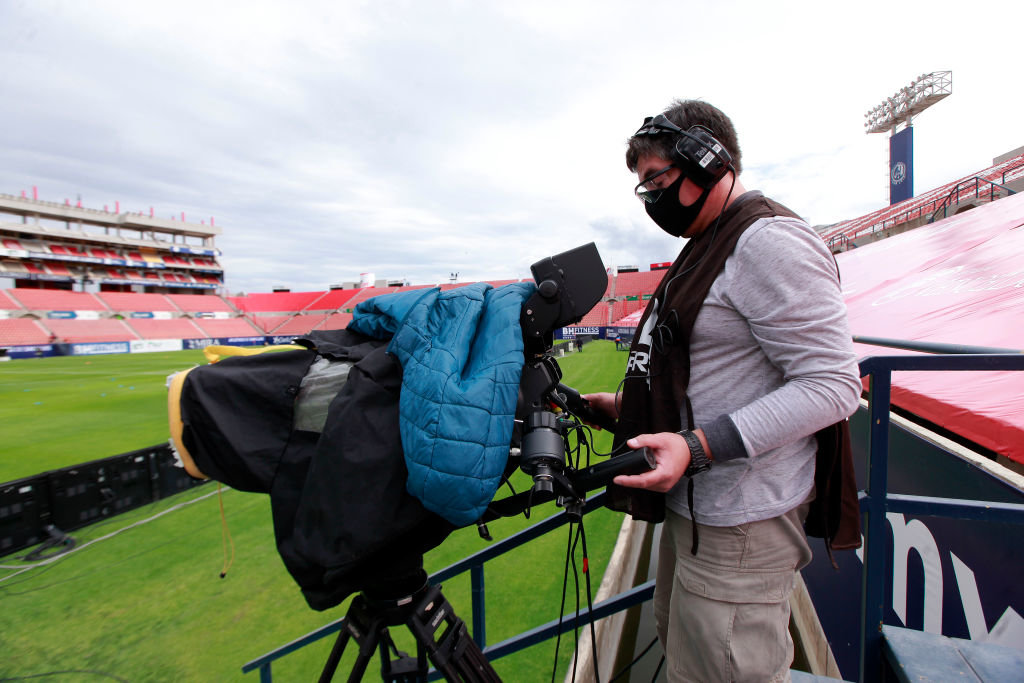
Sports fixtures without fans are now commonplace
Across the globe, media outlets are now having to work out safe and secure ways of producing the same complex, high-quality broadcasts as before the pandemic struck, while in some cases a majority of their usual on-site staff work remotely.
Commentators calling fixtures from the comfort of their own homes has quickly become the norm, as has studio shows featuring an entirely remote panel.
Indeed, networks’ ability to set up what are essentially replica studios and operational broadcast desks in people's homes has been key to their continued production of live programming.
Jamie Hindhaugh, chief operations officer at BT Sport, the UK pay-television broadcaster, tells Sportcal Insight that after entering Covid-related lockdown on 16 March, “within a fortnight we were back producing our normal six live shows per week, by deconstructing the normal studio gallery, taking the different elements out, and putting them in people’s houses.

Jamie Hindhaugh, BT Sport’s operations officer
“We started using technology to enable people to work remotely, meaning they can drive their part of the edit suite from a home computer, with all the same capabilities.”
He adds: “We made a choice that we should reflect the challenges our audiences have faced - hence doing shows where every single person involved, including the presenter, was working from home.
“We normally have 400 people running our studio operations and production at our London base - within a week, that was almost down to nothing.”
BT Sport also continued using remote 4K, Ultra High-Definition production, ensuring a high-quality output.
When BT Sport first returned to live soccer coverage, with Germany's top-tier Bundesliga in mid-May, the broadcaster was able to cover the matches with a minimum number of people in its London studio, while all commentators were home-based.
“We normally have 400 people running our studio operations and production at our London base - within a week, that was almost down to nothing.”
For the return of live boxing to the UK a month later, the broadcaster worked alongside Frank Warren, the promoter, to bring the sport back to TV screens by holding fights in its studio.
As Hindhaugh says: “We chose the studio to host the events because it’s an environment we can control, with all our one-way systems and social distancing measures in place.
“The challenge was getting people in and out without placing them in close proximity to each other, so that we didn’t have too many on site at one time. The planning was therefore really important.”
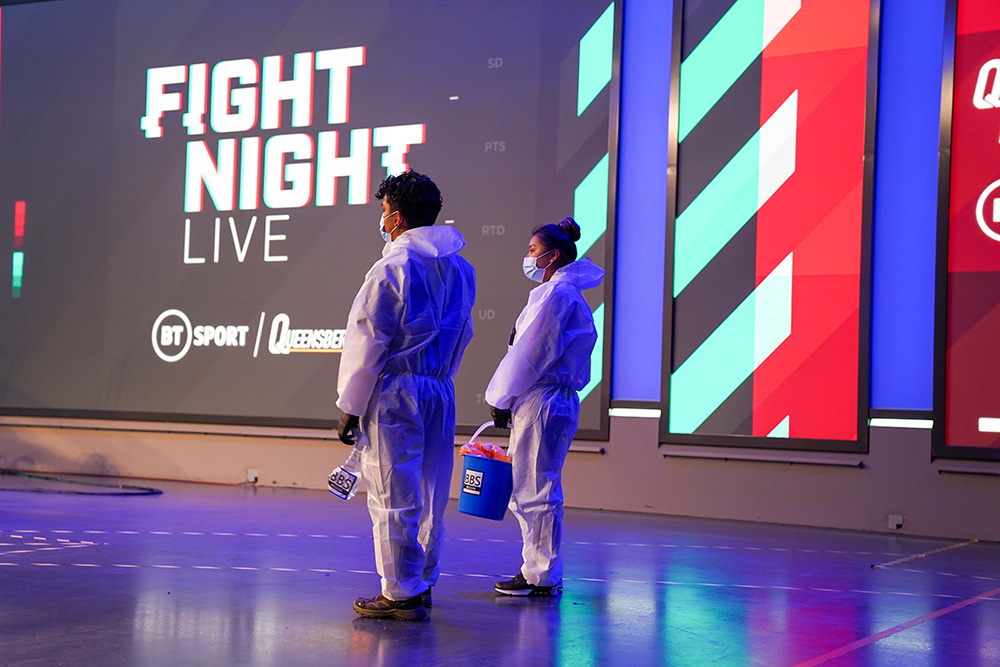
BT Sport brought back boxing in its own studio
Innovation and adaptation have also been buzzwords at Sunset+Vine, the UK-based TV sports production company that produces several live soccer programmes for BT Sport, while also counting cricket and rugby tournaments around the world in its portfolio.
David Tippett, head of broadcast at S+V, outlines two different methods the firm has used over the last few months: remote at-home production, and remote-controlled outside broadcast production.
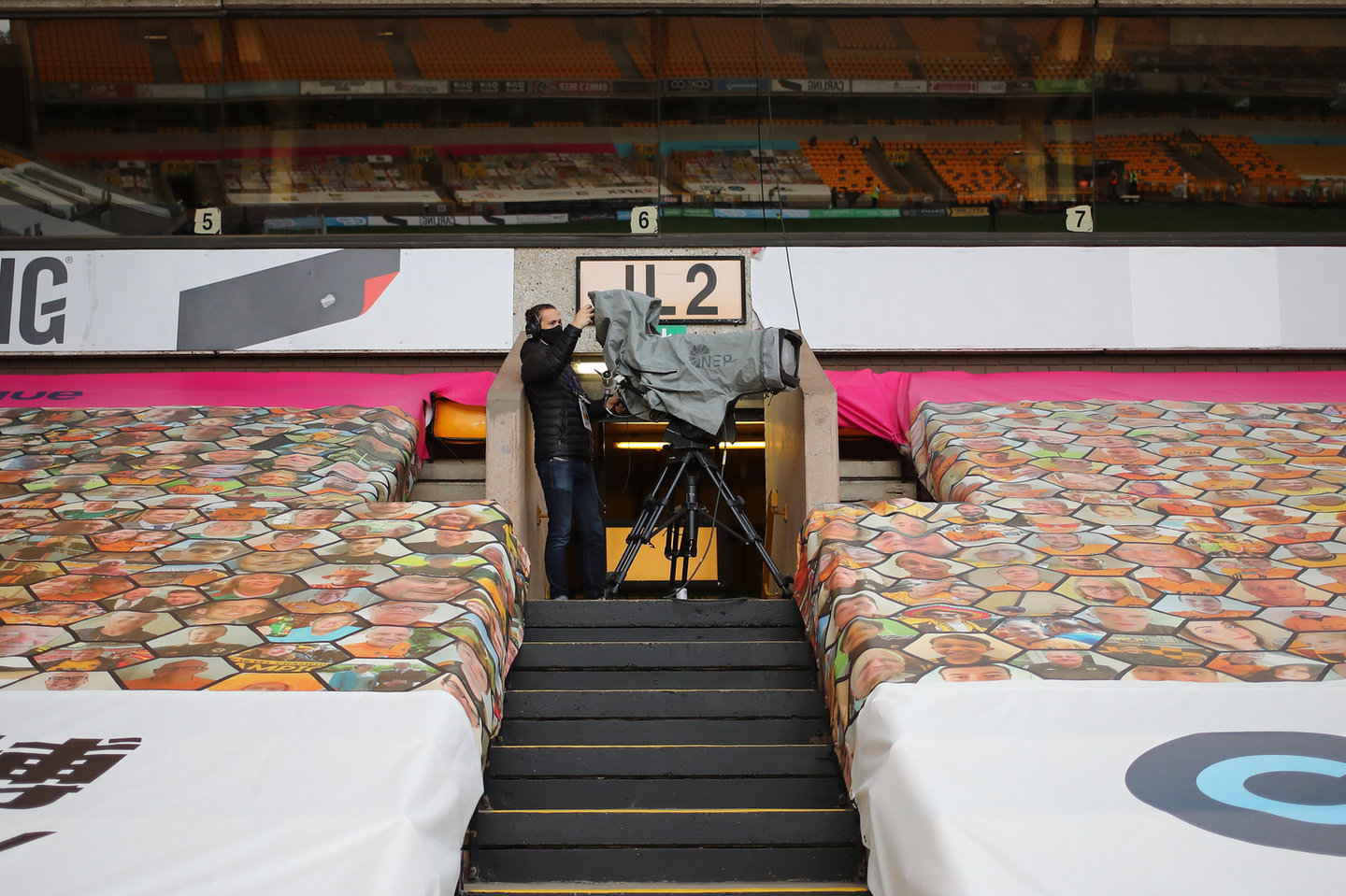
The English Premier League restarted behind closed doors in June
The second method, which has been used over the last few months for BT Sport’s live coverage of English soccer’s top-tier Premier League, involves a Remote Operation Centre controlling every aspect of the live broadcast that would normally be directed from a truck at the stadium.
Tippett says S+V has been able to shift seamlessly from one model to another depending on the broadcaster it is working with, something which he suggests is key to the group’s operations at the moment.
He explains: “As opposed to us having a fixed view on how we should carry out production in a post-pandemic world… we have a number of different models we can apply, and we can match those to the specific needs of the client, and the specific nature of the production.
“We don’t apply a pre-conceived idea as to how production should take place.”
The firm will be working on live soccer, rugby and cricket over the next few weeks and months, and Tippett tells Sportcal Insight that with all these different fixtures and tournaments presenting different obstacles - both in terms of logistics and the production itself - “the challenge is how we adapt to the changing circumstances.”
For example, for Twenty20 cricket's Caribbean Premier League that got under way in late August, which S+V produces, the issues are mainly around getting people to and from the event.
As Tippett says: “That’s the main challenge - getting people and kit to wherever they need to be, in the current travel environment, and then holing them up in hotels for two weeks’ quarantine…
“The social distancing in the venues for that particular tournament is slightly easier, because we build the controls rooms ourselves - it’s a ‘fly-pack’ design, so we can build them with the various elements spread out more, and design things accordingly.”
Health and safety are, understandably, paramount.
Tippett adds: “In terms of safety for outside broadcasts, we’re doing things like staggering the times when the various elements of our team are on site rigging equipment before an event, we’re also putting perspex screens in our trucks and taking a good look at what operating positions actually need to be used in our areas.
“Our outside broadcast partners are also giving the trucks and equipment a deep clean after we use them.”
“We don’t apply a pre-conceived idea as to how production should take place.”
With the vast majority of elite sport being played behind closed doors – thus lacking atmosphere - various solutions have been trialled, with fake crowd noise and holographic spectators being the most common used by broadcasters.
Indeed, coverage of the various top-tier leagues to have got underway behind closed doors - the Premier League, Bundesliga and Major League Baseball and basketball’s NBA in USA - has routinely featured the sort of broadcasting trickery and creativity that previously would have been considered outlandish and unnecessary.
Some broadcasters in fact are now finding this the perfect time to unleash innovations they have been keeping under wraps.
Eleven Sports, the international subscription broadcaster, has been able to deploy its Watch Together virtual option for fans.
Eleven holds rights to motor racing’s Formula 1 and American football’s NFL in several European countries, and also covers soccer leagues on the continent including Spain’s LaLiga, the Bundesliga, and from 2020-21, Belgium’s top-tier Pro League.
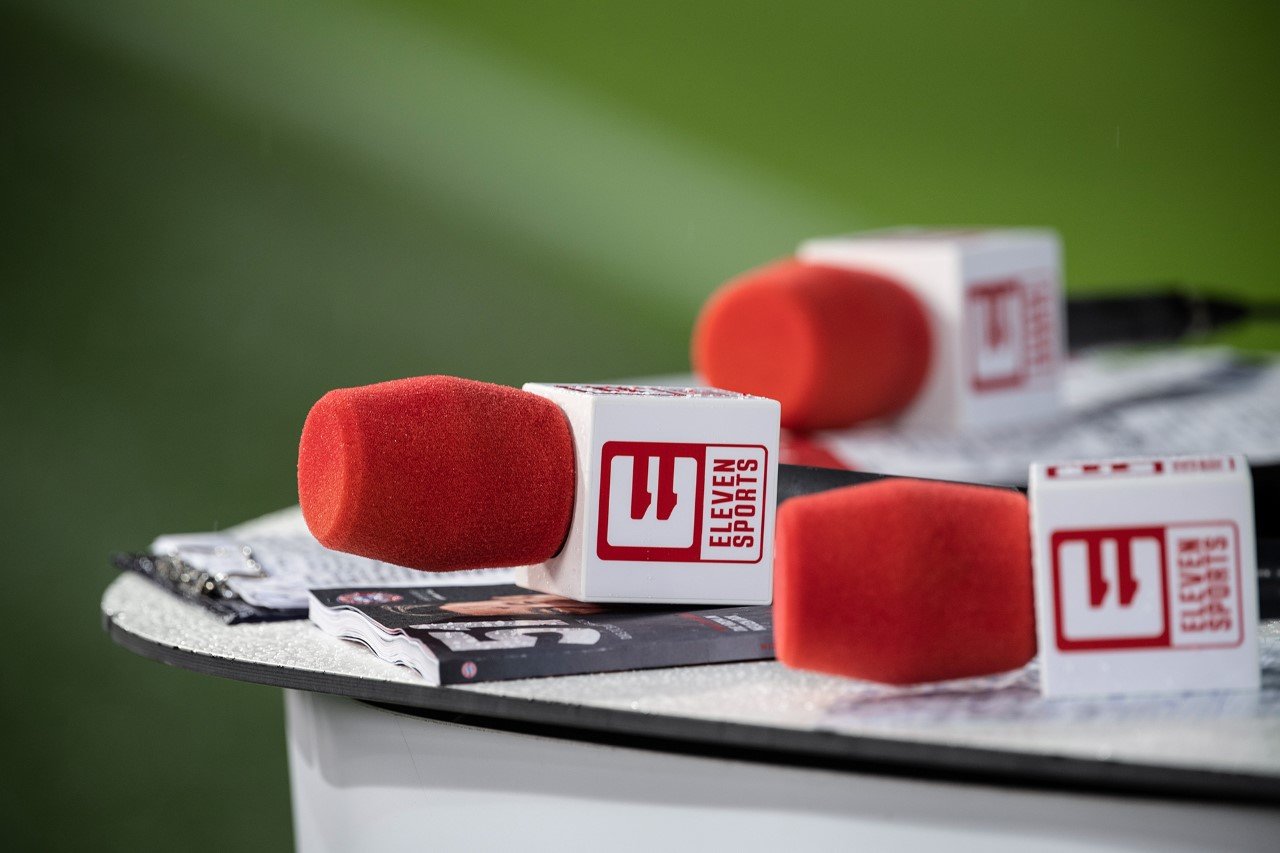
Eleven holds rights to major competitions across Europe
As Tom Middleditch, Eleven’s global head of digital, says: “Watch Together has been the biggest thing for us. It’s a tool we created a couple of years ago, and was very popular anyway, but during lockdown it’s been a really important resource for lots of our subscribers.
“It’s a great tool, so I’ve been delighted to see other broadcasters roll out similar offerings so widely in recent months.
“Our big focus has been on offering fans a sense of community over the lockdown period, and ramping up opportunities for them to engage in our coverage.”
He adds: “The last few months have seen everyone experiment with new content ideas and product innovations, and I’ve been really interested to see so many new ideas coming to the fore…
“We’re seeing that many fans want a more active viewing experience, so we’re working hard to keep developing our offerings in this area.”
For Eleven’s coverage of the Chinese Baseball League, the broadcaster brought in ‘umpire cam’, a camera attached to the headwear of the umpire, to give the viewer a close-up look at the pitch being delivered.
Middleditch notes: “It’s the first time that’s really been done in baseball to my knowledge.”
Broadcasters have also tried to bring fans as close physically to the action as is permitted, with BT Sport setting up specific ‘fan zones’ where supporters can congregate and watch live coverage, while Eleven has been bringing fans into studio shows too, according to Middleditch, who adds: “We’re here to deliver for them basically.”
“Our big focus has been on offering fans a sense of community over the lockdown period, and ramping up opportunities for them to engage in our coverage.”
Discovery, the US-based media giant which owns pan-European network Eurosport, has also been innovative in embracing this approach.
For its domestic coverage of Danish soccer’s top-tier Superliga, the broadcaster set up dedicated ‘celebration’ cameras on the field: when one team scored, their players could run towards the two cameras and celebrate directly down the lens.
It also partnered with specific clubs from the league, in collaboration with Zoom, to allow fans to watch the matches via Zoom group calls, with their faces appearing on giant screens, in different locations depending on the fans’ choice, around the stadium.
Søren Klæstrup, senior editorial director at Discovery Networks Denmark, said it was about giving viewers “an extraordinary experience in an extraordinary time… Our whole mission is to bring the fans closer to the players and teams when they can’t be there themselves.”
Meanwhile, UK pay-TV broadcaster Sky introduced a myriad of innovations to its live on-site coverage of international cricket, which resumed in July with England’s Test series against the West Indies and continued with series against Ireland and Pakistan throughout August.
These have included crowd sound, a buggy carrying a camera for specific presenters instead of a cameraman in person, flying cameras travelling above the ground on wires high above the outfield, and a special room called the Player Zone, which acts as a replacement for in-person interviews. As it’s done remotely, interviews can be conducted during play itself, adding another dimension to the coverage.
Sky’s director of cricket, Bryan Henderson, called it “an exhaustive planning process.”
Broadcasters have also been engaging more and more in recent months with digital platforms, including YouTube and Twitch. While the initial focus of this has been on showing archive content, original studio programming and behind-the-scenes content, live sport could well start to feature soon.
If popular leagues worldwide continue to be held behind closed doors for the foreseeable future, partnerships between YouTube and broadcast rights holders could well stand to capitalise on a hitherto-untapped audience, with ‘teaser’ content being put out to encourage fans to buy broadcast subscriptions.
Tomos Grace, YouTube’s head of sport for EMEA, told Sportcal back in May: “We would like to do a lot more live sports partnerships with sports organisations and also broadcasters… That bigger audience and bigger watch time is hopefully something of benefit.”
As for lessons learned since the pandemic struck, Hindhaugh notes: “Be brave, and accept that because we’re doing these things for the first time, something might go wrong.
“If you don’t try it, you’re never going to know… After every event we look back at what worked and what didn’t, and overall we’ve learnt a huge amount.
“Things like the enhanced sound we can now put into our Premier League coverage, that’s been a learning for all broadcasters, and we’ve all done it in slightly different ways.
“For us, I’m pleased that we’ve given viewers a choice - to watch with or without sound… We’re not trying to kid anyone by putting it in, but sound is so important when it comes to the enjoyment of watching a game, how it signposts key moments.”
Middleditch shares similar sentiments, saying that both in terms of their own lockdown coverage, and that of other broadcasters, “there’s lots of good lessons for us to take, and we’ve got a few new ideas of our own too.”

Broadcast studios and centres have fallen silent
Sports broadcasters that have been bold in experimenting with coverage over the last few months have now “widened their range of options editorially,” Hindhaugh believes.
He says: “We now have a pick and mix of opportunities - whether we want guests in the studio or in their homes, whether we want a production team on site or remote, how much we want fans to be involved…
“There’s lots of opportunities moving forward, having the studio structure we’ve got means we always have a plan B.”
Tippett agrees, saying: “In terms of our learnings and what we can take on from technical models that have been put in place, there are a few.
“Producers can now take the technology that has been developed, take the new production models, and use these to develop on-air techniques that improve the broadcast.
“Now, we’re much more comfortable with using remote contributors during shows, so we’re now able to make studio shows which wrap around an outside broadcast, and also feature pundits from their own homes.”
Sky used this method in the UK to good effect during its coverage of Liverpool’s title win in early July, during which multiple contributors were used at the same time via a Zoom split screen.
“Broadcasters can only do that because of the new techniques which have been established,” Tippett says.
“Ultimately, our relationships with both our distribution partners and our outside broadcast partners are the crucial thing here, helping everyone to learn. We’ve got to collaborate with so many elements for a single production, so everyone needs to enter the process willing to be flexible.
“We now have a pick and mix of opportunities - whether we want guests in the studio or in their homes, whether we want a production team on site or remote, how much we want fans to be involved…”
With uncertainty over when fans will return to stadia and whether there will be another spike in the virus, it is unlikely that live sports broadcasting will return to pre-Covid levels of normality for some time yet.
“I don’t think anyone really knows if and when we might be back to normal, or anything like what it was before,” says Tippett. “We’re one part of a much larger jigsaw, and there are definitely larger challenges to be overcome to do with the sports themselves before broadcasting can be an important consideration again.”
Hindhaugh adds: “Being blunt, I think this situation now is the new normal, as much as I hate that term.”
With this cautious approach in mind, broadcasters worldwide are assessing how they can enhance and further refine their lockdown production methods.
Tippett suggests that while the first few weeks and months of lockdown saw networks simply reacting to events, and making do as best they could, they’re now at the stage where more emphasis can be placed on the sharpness and quality of the production.
He explains: “The initial focus was very much on the ‘how’ - how do we continue producing shows, how do we fulfil contractual obligations, how do we ensure staff safety.
“Now, things are settling down and we’re all becoming more familiar with the new models we’re working with, so we’re now seeing producers take a bit more control of their productions, and start applying creativity again.”
Hindhaugh says he is now thinking more positively about the situation: “This has actually always been one of our key strategic ambitions, to enable remote production and give us more creative options.
“It can now be a case of mix and match… As far as I’m concerned, our workflows have always evolved, and will always keep evolving.
“Sports broadcasting as a whole is where innovation happens.”
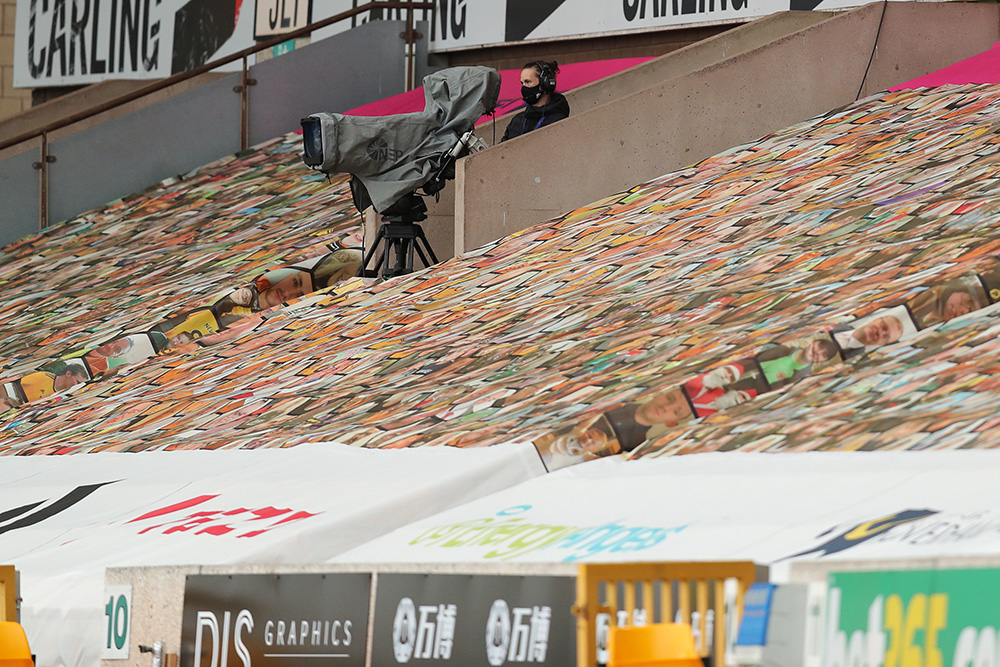
Is the current situation the future of sports broadcasting?